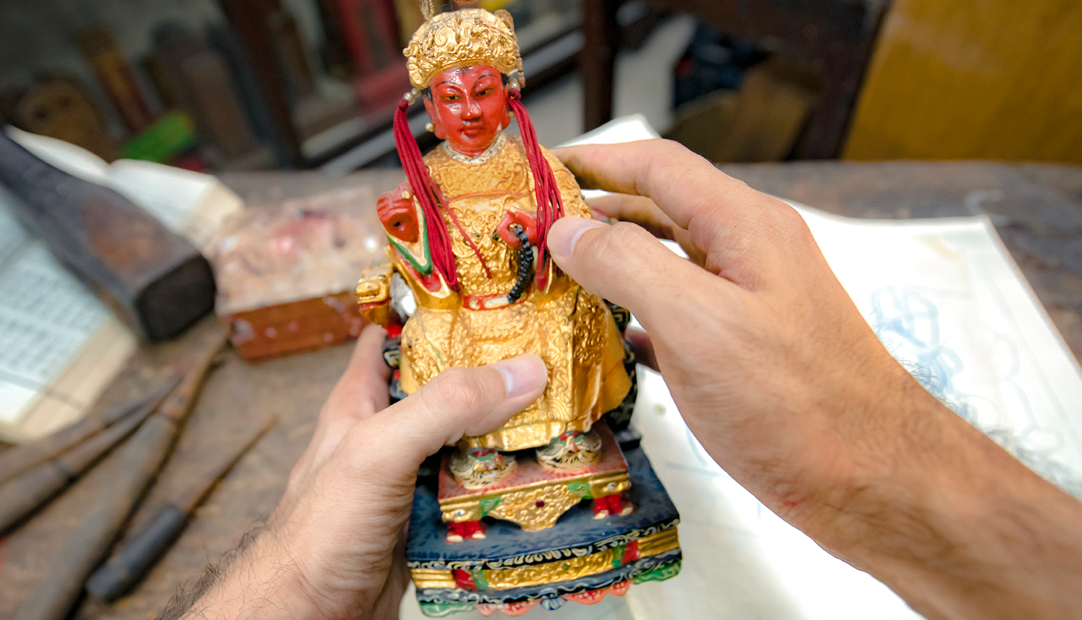Ng Tze Yong
The story of Ng Tze Yong.

I grew up in the shop and have always wondered what would happen to it eventually.— Ng Tze Yong, 38, Effigy Making Workshops
Effigy-making is a painstaking process, no doubt. First, a wooden block is carved into the likeness of a deity, then meticulously hand-painted with symbolic motifs using bamboo brushes and a special type of dough. Each effigy takes about a month to complete. In the face of mass-production, this slowly vanishing craft — and an important part of Singapore’s heritage — is facing a fateful end.
My grandmother learned the art of effigy making from my late grandfather, whose father started the business in 1896. When she first picked up the art of effigy-making, it was simply a way to put food on the table and bring up seven kids in post-war Singapore. The art was a means to an end in those days, and she would never have dreamed of it becoming the heritage business that it is today.

In my grandparents’ generation, these effigies were the anchors in their home and life. They gave hope and protection, and reminded them of where they came from and where they were going. Crafting these effigies was a traditional art that reflected the culture and identity of the generation then. Connecting with this craft gave me a sense of their struggle and a sense of rootedness in a globalising world.
While doing my design MBA, I had a full year to think about how to reinvent this heritage business, and pivot it towards an international, secular audience. Perhaps, we should imagine these effigies, not just as objects of worship, but as works of art.
It was with this thought that I started creative effigy-making workshops with partners who brought more to the table than I expected. We were connected to artists, designers, filmmakers, and professors, who were just as inspired by us as we were by them. After all, the craft in itself is part of our intangible cultural heritage, and I want to bring the experience to others so that they will appreciate the craft even if they don’t know the deities.
If we don’t take what we cherish and interweave it into the present, we won’t be able to take it into the future.— Ng Tze Yong




Would I have regretted it if I haven’t done this? Absolutely. Time is ever-ticking, and the world is ever-changing. If we don’t take what we cherish of the past and interweave it into the present, we won’t be able to take it to the future — and that is what gratifies me most about this project. Now, I have involved four generations of the family, from my 87-year-old grandmother to my 6-year-old daughter, who gives a little speech in the middle of the workshop.
And as for my grandmother, she is still amused by the number of people coming to the shop to learn her craft and take pictures with her, each month. She still asks, “who are these people, and how come they know about our little shop?”

My name is Ng Tze Yong, and I believe that history has a place in the present, if we make it so.— Ng Tze Yong
Explore more
Browse stories or opportunities to get involved
